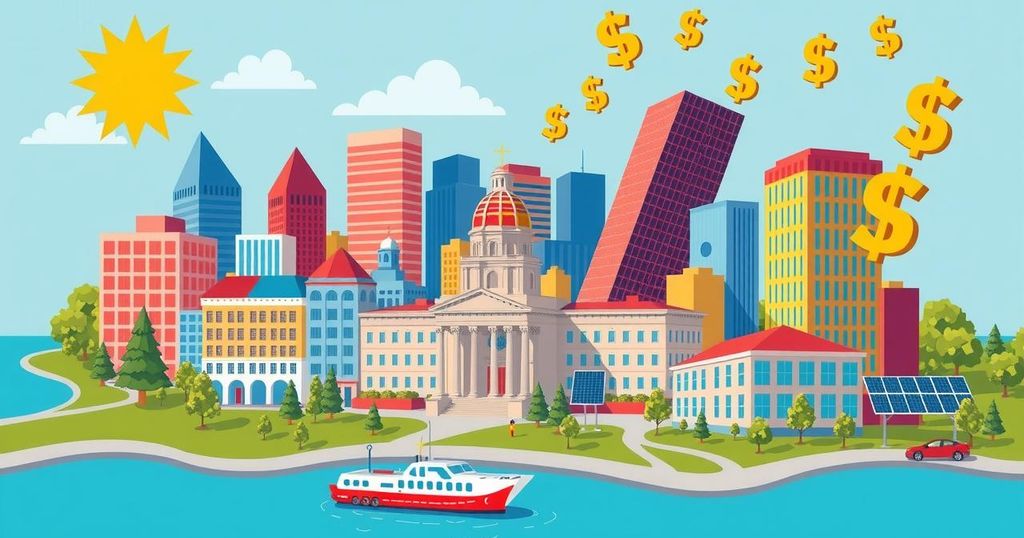Four Ways Trump’s ‘One Big Beautiful Bill’ Could Affect Hoosiers
As President Trump pushes forward with his “One Big Beautiful Bill Act,” Hoosiers are positioned at a crucial crossroads. The bill promises big changes that could dramatically affect health care, taxes, and more.
An Overview of Trump’s Legislative Push and Its Stakes
President Donald Trump’s “One Big Beautiful Bill Act” is speeding towards potential law, following a narrow Senate vote on July 1 that raised eyebrows across the nation. The proposed legislation has been debated for months, and if passed, could profoundly affect Hoosiers with changes to taxes and government program access like Medicaid. Despite a wave of unfavourable opinions across the country, Indiana lawmakers appear divided largely along party lines, with local Republicans supporting Trump’s agenda, while Democrats stand firmly opposed.
Potential Loss of Medicaid and SNAP Access
One major concern when it comes to the bill is Medicaid and SNAP — the nutritional assistance program that many low-income families depend on. The Senate’s draft hints at decreasing the cap on provider taxes from 6% to 3.5%, an adjustment that could squeeze Indiana’s Medicaid funding significantly. As recent warnings from state leaders indicate, these cuts could lead to thousands of Hoosiers losing their access to essential health care services, and may even force the state to seek permission from the federal government to limit enrollments.
Stricter Work Requirements for Medicaid Recipients
Interestingly, the bill also adds work requirements for those receiving Medicaid, a move that some argue could bring more challenges for lower-income citizens. From late 2026, Medicaid recipients will be expected to work a minimum of 80 hours a month. Additionally, if older citizens thought they were immune to such stipulations, they’ll need to rethink that; the working age threshold for food stamps is raised from 55 to 64 years. Statistics show that over 1.9 million Hoosiers are currently enrolled in Medicaid, with nearly 600,000 depending on SNAP — that’s a significant portion of the population that could be affected. On a side note, a separate state bill seeking similar work requirements is still pending approval at the federal level.
Making Tax Cuts Permanent — A Potent Factor
Turning to the realm of taxes, the bill aims to make the expiring tax cuts from the 2017 Tax Cuts and Jobs Act permanent. It’s estimated by the Tax Foundation that failing to do so would mean an average tax hike of approximately $1,936 per Hoosier by 2026. Plus, the bill doesn’t stop there — it introduces additional tax benefits, like special deductions for seniors and interest relief on auto loans for domestically made vehicles. For Indiana households earning around $70,000, the bill’s provisions could yield around $1,700 in tax cuts in 2026, a financial boost that some residents may welcome.
Impending Loss of Clean Energy Tax Credits
However, it’s not all sunshine when it comes to taxes under this proposed plan. Homeowners in Indiana who sought out clean energy tax credits might find themselves at a loss. The bill sidelines generous tax credits that were meant to help with solar panels and other green upgrades, cutting access to funds that could run into the thousands. These credits were initially set to last until the mid-2030s but could vanish as soon as this autumn. Moreover, the evaporation of these incentives could pose a risk to roughly 4,000 solar jobs in the state, sending environmental advocates into a frenzy about losing momentum.
Short-term Relief for Overtime and Tip Workers
Lastly, the bill does aim to provide some temporary tax benefits for those who work overtime or in tip-heavy jobs. Up to $12,500 of overtime pay will be tax-deductible, with joint tax filers enjoying a double offering of $25,000. If you’re earning tips, the initial $25,000 will also dodge taxation. Business owners like Mitch Olson from Indianapolis argue that these tax breaks support economic growth by putting extra money into employees’ pockets, helping them to attract and retain talent. However, these benefits only last until 2028, leaving lots of questions about what comes next for workers.
Key Takeaways: The Bill’s Dual Impacts
In summarising the multifaceted impact of Trump’s proposed legislation, it’s evident that Hoosiers could face substantial changes — both good and bad. With cuts to critical services like Medicaid and the loss of clean energy incentives, some may struggle to make ends meet, while others might benefit from extended tax cuts. As the final vote inches closer, all eyes are on how this bill will ultimately reshape the financial landscape for Indiana residents. Hoosiers deserve to know what lies ahead when the dust settles and the implications unfold in their daily lives, in both ways that will assist and side that will challenge them.
A Future of Uncertainty Looms for Hoosiers
In summary, the One Big Beautiful Bill could significantly reshape the lives of Hoosiers across Indiana. From potential cuts in vital programs like Medicaid and changes to SNAP eligibility, to possibly beneficial tax cuts for high earners, the stakes are high. Environmental incentives may dwindle, along with future job prospects in the green sector. And while there’s an effort to provide temporary relief to certain workers, the uncertainty lingers about the bill’s long-term effects. It’s a confusing time with many questions left unanswered as this legislation makes its way to Trump’s desk.
This proposed legislation indeed presents an intricate dance of rights and controls, with policies that could liberate some while constraining others. The soon-to-be-decided bill is worth keeping an eye on for Hoosiers, as its impact will ripple through the state for years to come. Amid the polarising political landscape, the elements at stake affect lives directly in tangible ways, leaving many to wonder if they’ll thrive or simply survive in the next chapter of Indiana’s health and economy.




